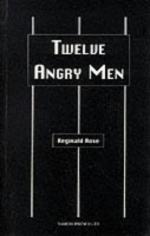
|
| Name: _________________________ | Period: ___________________ |
This test consists of 15 multiple choice questions and 5 short answer questions.
Multiple Choice Questions
1. Which two jurors are moved by the discovery about the timing involved in the old man's story?
(a) Juror Two and Six.
(b) The foreman and Juror Four.
(c) Jurors Ten and Twelve.
(d) The foreman and Juror Six.
2. What literary device is used by the writer to create a high level of interest in the play by presenting the strongly contending views of the jurors?
(a) Antithesis.
(b) Tension.
(c) Dialogue.
(d) Conflict.
3. What source of information from the trial do the jurors use to help them estimate the time of the events surrounding the murder?
(a) Photographs of the building.
(b) They get the dimensions of the old man's room from a diagram of the apartment building.
(c) The old man's diary.
(d) The transcript of the old man's testimony.
4. What is the most significant method used by Juror Eight to influence other jurors?
(a) Concern for the defendant.
(b) Logical reasoning.
(c) Ability to listen.
(d) Concern for justice.
5. How does Juror Eight capitalize on the error made by Juror Three in threatening to kill him?
(a) He asks Juror Three whether he really means that.
(b) He tells the other jurors "See? He said what he didn't mean."
(c) He asks the other jurors if they think that Juror Three would really kill him.
(d) He asks Juror Three if he would really kill him.
6. After getting a more accurate timing of the events described by the old man, what do the jurors realize?
(a) It takes 42 seconds to get to a certain point which the old man said took 10 seconds.
(b) It takes 50 seconds to get to a certain point which the old man said took10 seconds.
(c) It takes more time than the old man said to move from his bed to the window.
(d) It takes 39 seconds to get to a certain point which the old man said took 10 seconds.
7. Why is the decision making process conducted by a group more complex than one that is made by just an individual?
(a) It is not more complex, it just takes longer.
(b) It takes time for everyone to express personal views in a group.
(c) People influence each other in a group.
(d) In a group there are many contending personalities and views.
8. How does the progress of the discussion in Act II affect the behavior of the group of jurors?
(a) The jurors continue to hurry towards a conclusion.
(b) The jurors begin to listen to Juror Eight.
(c) The jurors begin to take the defendant more seriously.
(d) As a group, the jurors develop insights that they could not have individually.
9. Considering the information available about the defendant, to what extent does the composition of this jury reflect the principle that should guide the composition of a jury trying a case?
(a) To a great extent.
(b) Totally.
(c) Not at all.
(d) To a limited extent.
10. How does Juror Eight's participation in the altercation with Juror Three differ from his usual approach?
(a) It shows he hates Juror Three.
(b) It shows he is capable of violence.
(c) It shows he is capable of anger in spite of his usual sober analysis.
(d) It shows he has a temper, too.
11. What starts the physical confrontation between two jurors in Act II?
(a) Juror Eight lunges after Juror Three, who calls him a sissy.
(b) Juror Three lunges after Juror Eight, who accuses him of being a sadist who wants to see the defendant die.
(c) Juror Three hits Juror Eight, who accuses him of being prejudiced.
(d) They confront each other after exchanging harsh words.
12. Why does a juror change his vote after the discussion in Act II about the defendant's words?
(a) He believes the whole jury is going to change.
(b) Juror Eight proves that people often say things they don't mean.
(c) He says there is now reasonable doubt.
(d) He is from the ghetto and believes the defendant has been the victim of prejudice.
13. What important shift in the attitude of many jurors takes place during the debates in Act II about the case?
(a) They become more sober and thoughtful in discussing the issues.
(b) They become calmer and participate less in the discussion.
(c) They withdraw and consider their own feelings.
(d) They are more agitated because so much time is passing.
14. As the jurors analyze the evidence and arguments more closely, it becomes evident that the dissenting voter is playing a critical role as an agent of change. Which of the following words best describes this role?
(a) Rebel.
(b) Radical.
(c) Revolutionary.
(d) Catalyst.
15. What does Juror Eleven assert in defense of the result of the second vote?
(a) Juror three has no right to attack another juror.
(b) Juror Three is prejudiced.
(c) That in America, people are free to hold dissenting views.
(d) Juror three disrespects the constitution.
Short Answer Questions
1. In the altercation between two jurors, what words used by Juror Three shed light on the earlier discussion about whether people always mean what they say in anger?
2. Which juror says he would change his vote if he could find one reason to make him question the defendant's guilt?
3. Which juror admits to having changed his vote?
4. What literary device is used by the writer when he allows Juror Three to prove something to the jurors that is exactly opposite to what he would have wanted?
5. According to the old man witness, where was he when he heard the argument between the defendant and his father?
|
This section contains 921 words (approx. 4 pages at 300 words per page) |

|




